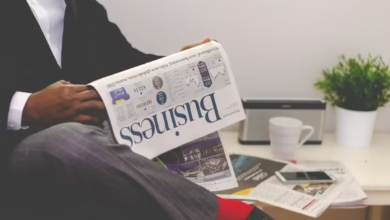Inflation Unveiled: Understanding Its Impact on Purchasing Power, Investment Strategies, and Economic Stability

Inflation, often referred to as the silent thief of purchasing power, plays a crucial role in shaping both individual financial decisions and broader economic landscapes. As prices rise, consumers find their dollars stretching thinner, which can lead to significant changes in spending habits and overall economic stability. This article delves into the multifaceted impacts of inflation, exploring its direct effects on consumer purchasing power, the intricate relationship between inflation and interest rates, and the strategic measures investors can take to protect their portfolios. We will also examine the historical context of hyperinflation, drawing valuable lessons from past events, and analyze how central banks utilize monetary policy to combat rising prices. Additionally, we will address the current challenges posed by supply chain disruptions and their role in driving inflation, as well as the implications for wages and employment. Through this comprehensive exploration, we aim to equip readers with a deeper understanding of inflation and its far-reaching consequences in today’s economy.
- 1. **Understanding Inflation: Its Effects on Consumer Purchasing Power and Economic Stability**
- 2. **Navigating Inflation: Strategies to Shield Your Portfolio and Investment Assets**
1. **Understanding Inflation: Its Effects on Consumer Purchasing Power and Economic Stability**
Inflation refers to the general increase in prices of goods and services over time, which leads to a decrease in the purchasing power of money. When inflation rises, each unit of currency buys fewer goods and services, effectively eroding the value of consumers' savings and income. This reduction in purchasing power can significantly impact consumers' ability to maintain their standard of living, as they may find it increasingly difficult to afford essential items such as food, housing, and healthcare.
The effects of inflation extend beyond individual consumers; they also influence overall economic stability. High inflation can create uncertainty in the economy, leading to reduced consumer spending and investment. When prices rise unpredictably, consumers may postpone purchases, anticipating even higher prices in the future. This can result in a slowdown in economic growth, as businesses face declining demand for their products and services.
Moreover, inflation can disproportionately affect lower-income households, which tend to spend a larger portion of their income on basic necessities. As prices rise, these households may have to make difficult choices, such as cutting back on essential expenses or seeking additional sources of income. This can exacerbate economic inequality and contribute to social unrest.
In contrast, moderate inflation can indicate a growing economy, as it often reflects increasing demand for goods and services. However, when inflation rates become excessively high, as seen in periods of hyperinflation, the consequences can be devastating. Hyperinflation not only undermines consumer confidence but can also lead to a complete breakdown of the currency system, prompting individuals to revert to barter or adopt foreign currencies for transactions.
Understanding inflation and its multifaceted effects is crucial for consumers, businesses, and policymakers alike. By recognizing the implications of rising prices, stakeholders can better navigate the challenges posed by inflation and work towards strategies that promote economic stability and protect purchasing power.
Inflation significantly influences consumer purchasing power, as it erodes the value of money over time. When prices rise, each unit of currency buys fewer goods and services, leading to a decrease in real income for consumers. This reduction in purchasing power can result in changes in spending behavior, where consumers may prioritize essential goods over discretionary spending or shift to lower-cost alternatives.
The relationship between inflation and interest rates is a critical one. Central banks often respond to rising inflation by increasing interest rates to cool down economic activity. Higher interest rates can make borrowing more expensive, which may lead to decreased consumer spending and investment. Conversely, lower interest rates are typically employed during periods of low inflation to stimulate economic growth. This dynamic creates a balancing act for policymakers as they seek to maintain price stability while fostering economic expansion.
To protect investment portfolios from inflation, investors can consider several strategies. One common approach is to allocate assets into inflation-resistant investments, such as real estate, commodities, and Treasury Inflation-Protected Securities (TIPS). These asset classes tend to perform better in inflationary environments. Additionally, diversifying investments geographically and across different sectors can help mitigate risks associated with inflation.
The impact of inflation varies across different asset classes. Equities may initially benefit from inflation due to rising revenues but can suffer if inflation leads to increased costs that squeeze profit margins. Fixed-income investments, on the other hand, often lose value during inflationary periods as rising rates make existing bonds less attractive. Real assets, such as gold and real estate, typically hold their value better during inflation due to their intrinsic worth.
Historical examples of hyperinflation provide valuable lessons for managing economies. The hyperinflation experienced in Germany during the Weimar Republic and more recently in Zimbabwe illustrates the devastating effects of uncontrolled inflation on savings, investments, and public trust in currency. These events highlight the importance of sound monetary policy and the need for central banks to act decisively to maintain price stability.
Central banks play a crucial role in combating inflation through monetary policy tools such as interest rate adjustments and open market operations. By influencing the money supply and credit conditions, central banks aim to manage inflation expectations and stabilize prices. Their actions are closely monitored by markets, as perceived effectiveness can affect economic sentiment and behavior.
Supply chain disruptions have also emerged as significant drivers of inflation, particularly in the wake of global events like the COVID-19 pandemic. When supply chains are interrupted, the availability of goods decreases while demand remains steady or even increases, leading to higher prices. Addressing these disruptions requires coordinated efforts across industries and governments to ensure resilient supply chains that can withstand shocks.
Lastly, inflation's impact on wages and employment is complex. While moderate inflation can lead to wage growth, excessive inflation can outpace wage increases, resulting in decreased real income for workers. This situation can create challenges for employers, as rising costs may force them to make difficult decisions regarding hiring and compensation. Understanding these dynamics is essential for navigating the economic landscape shaped by inflationary pressures.
2. **Navigating Inflation: Strategies to Shield Your Portfolio and Investment Assets**
As inflation rises, it erodes the purchasing power of consumers and can significantly impact investment portfolios. To navigate this challenging economic environment, investors can adopt several strategies to shield their assets from inflationary pressures.
One effective approach is to diversify investments across asset classes. Equities, particularly those in sectors like consumer staples, utilities, and energy, often have the potential to outpace inflation due to their ability to raise prices in response to rising costs. Additionally, real estate can act as a hedge against inflation, as property values and rental income tend to increase over time.
Another strategy is to consider inflation-protected securities, such as Treasury Inflation-Protected Securities (TIPS) in the U.S. These bonds are designed to adjust with inflation, ensuring that the principal and interest payments rise in line with the Consumer Price Index (CPI). This provides a safeguard against the erosion of capital and income.
Commodities, including precious metals like gold and silver, also serve as a traditional hedge against inflation. They tend to retain their value when fiat currencies lose purchasing power, making them a valuable addition to a diversified portfolio during inflationary periods.
Investors should also keep an eye on interest rates, as rising rates can affect fixed-income investments. It may be prudent to shorten the duration of bond holdings or to invest in floating-rate bonds, which can provide better protection against interest rate hikes that often accompany inflation.
Lastly, maintaining a cash reserve can offer flexibility and liquidity. In uncertain times, having cash allows investors to capitalize on buying opportunities that arise when markets are volatile.
By employing these strategies, investors can better protect their portfolios from the adverse effects of inflation, positioning themselves for resilience and potential growth amidst economic fluctuations.
In conclusion, inflation remains a complex and multifaceted challenge that significantly impacts consumer purchasing power, investment strategies, and overall economic stability. As we have explored, rising prices erode the value of money, compelling consumers to adjust their spending habits while placing pressure on wages and employment levels. The interplay between inflation and interest rates further complicates the landscape, necessitating careful navigation for investors seeking to protect their portfolios.
Strategies such as diversifying asset classes and considering inflation-protected securities can be effective in mitigating the adverse effects of inflation. Historical instances of hyperinflation remind us of the critical importance of sound monetary policy and the role of central banks in maintaining economic equilibrium. Additionally, supply chain disruptions have emerged as a significant driver of inflation, highlighting the interconnectedness of global markets and the need for resilience in our economic systems.
Ultimately, understanding the dynamics of inflation equips consumers and investors alike to make informed decisions in an ever-changing economic environment. By staying vigilant and adapting strategies to counteract inflationary pressures, individuals can better safeguard their financial well-being and contribute to a more stable economy.





